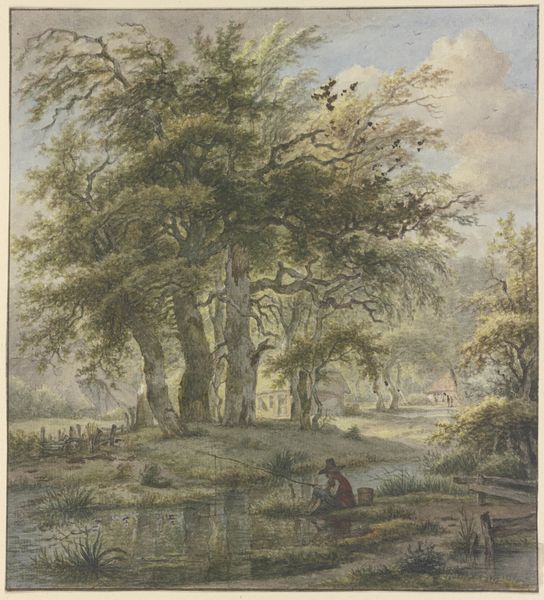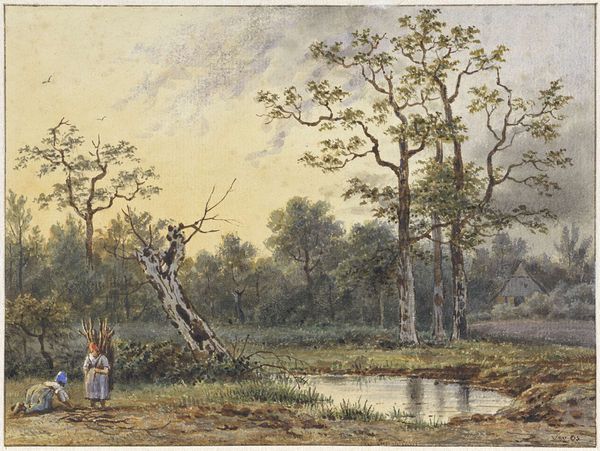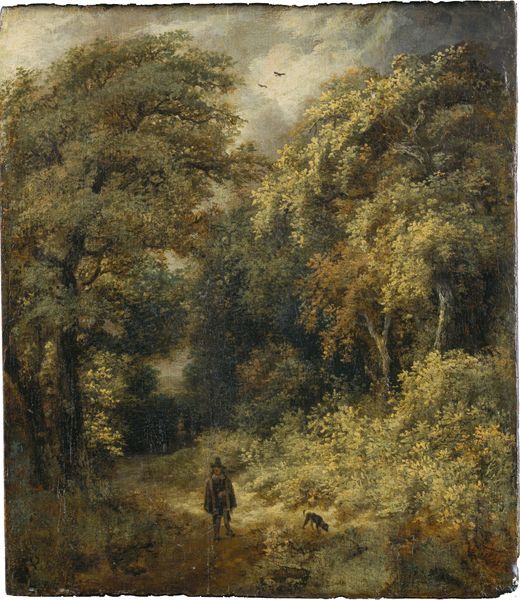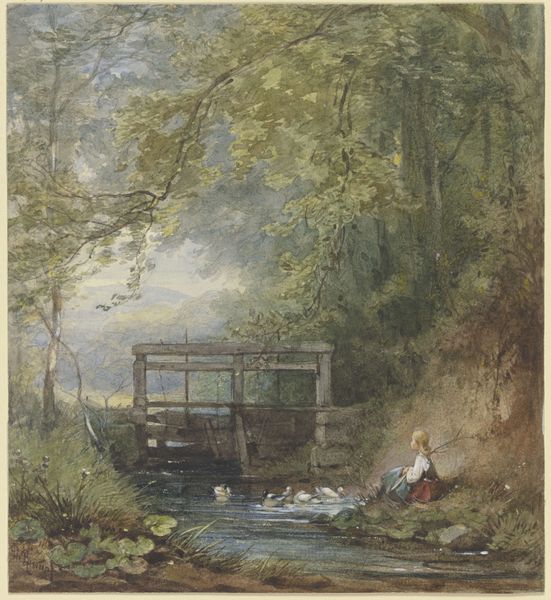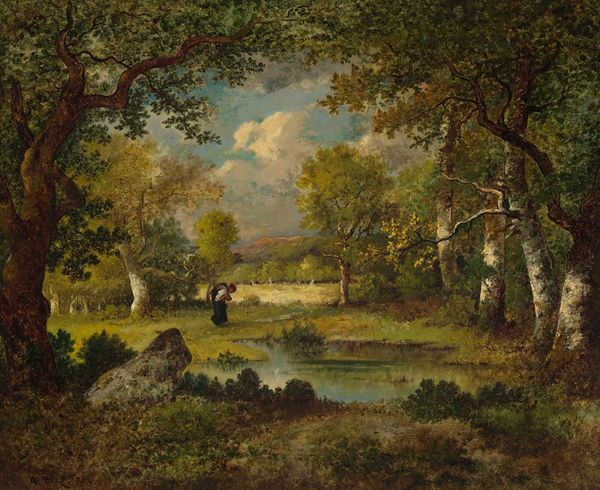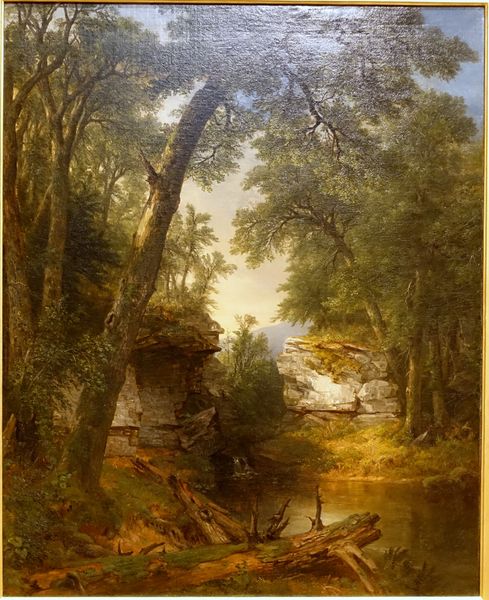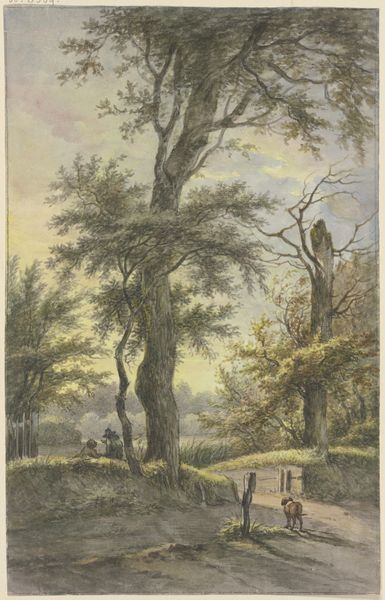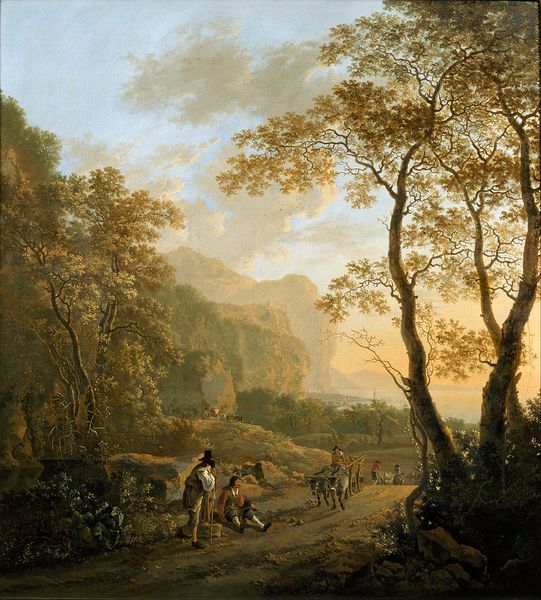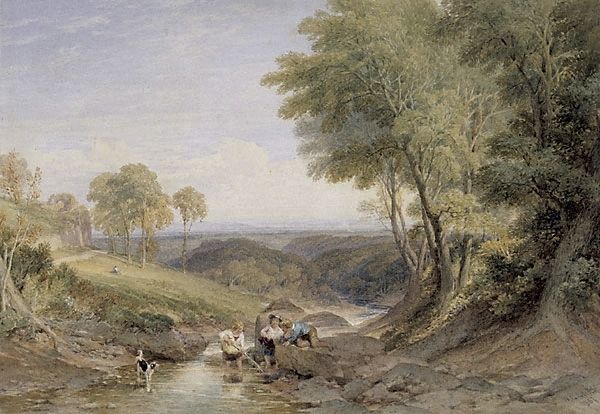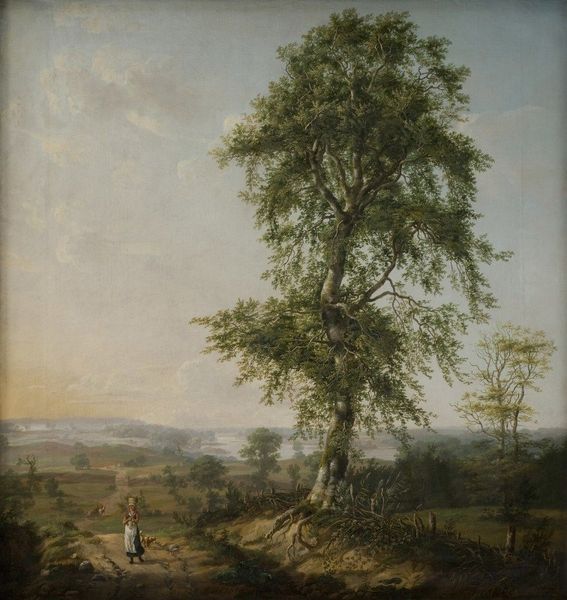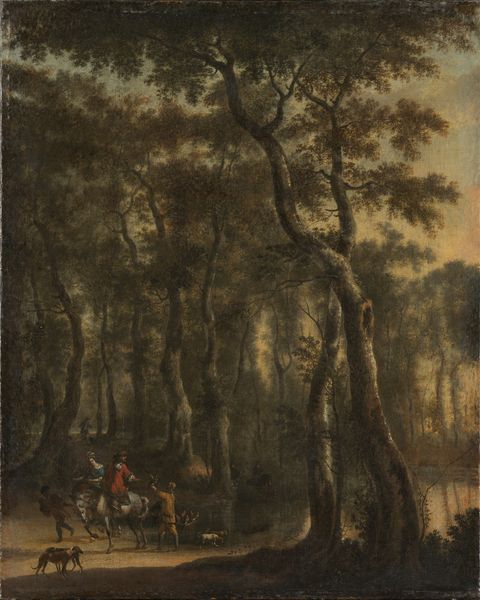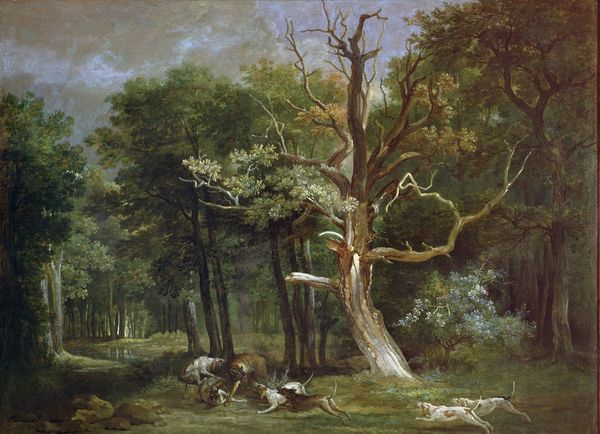
Dimensions: height 370 mm, width 520 mm
Copyright: Rijks Museum: Open Domain
Curator: This is "Boomrijk landschap met stenen brug over een rivier," a watercolor on paper by Willem Roelofs, created in 1852. It resides here at the Rijksmuseum. Editor: Immediately, I see a carefully constructed image of pastoral tranquility, everything seems poised in gentle harmony; there's a picturesque quality here. The bridge, trees, and animals are bathed in diffused light. It gives a sense of nostalgic longing. Curator: Given Roelofs's involvement in the "plein-air" movement, I'd say that idyllic impression arises directly from his working methods. This wasn't fabricated in a studio, but carefully observed and painted outdoors. The layering of the watercolour contributes to the atmospheric perspective he was aiming for. You see how that contrasts to studio landscape paintings of the period, with their highly constructed idealisations? Editor: Yes, the light almost feels like a character in itself, weaving through the branches. Notice how Roelofs uses the image of the stone bridge itself as an anchor and symbol. Bridges always represent transitions, don't they? They promise passage to a potentially brighter future, whilst simultaneously offering a nostalgic backward glance at the known side. Curator: Good point, bridges are often laden with symbolic meaning! Here, I think, the use of stone is vital. He’s juxtaposing the "natural" world – the trees, water, cattle – against a man-made structure, demonstrating a very romantic harmony between the two, don’t you think? It reinforces the notion of human integration, which in itself speaks to broader social commentaries around land use and agrarian society during that period. Editor: And the animals… They imbue this already picturesque landscape with additional symbolism. The cow, drinking from the river. It embodies pastoral abundance. Cows have long associations with nourishment, fertility, a connection with a very ancient vision of life itself. It adds to this romantic sensibility that permeates the image. Curator: So, through an awareness of production—a painting completed *in situ*—along with those recurring images of abundance, Roelofs shows how the land around us reflects, and reinforces social and cultural ideals that prevailed in the mid-19th century. Editor: Indeed, his focus on light and pastoral details invokes broader themes – cycles of nature, nostalgia for the past, and those cultural myths. This bridge across the river acts as a bridge across time, connecting then and now, isn't it fascinating?
Comments
No comments
Be the first to comment and join the conversation on the ultimate creative platform.
